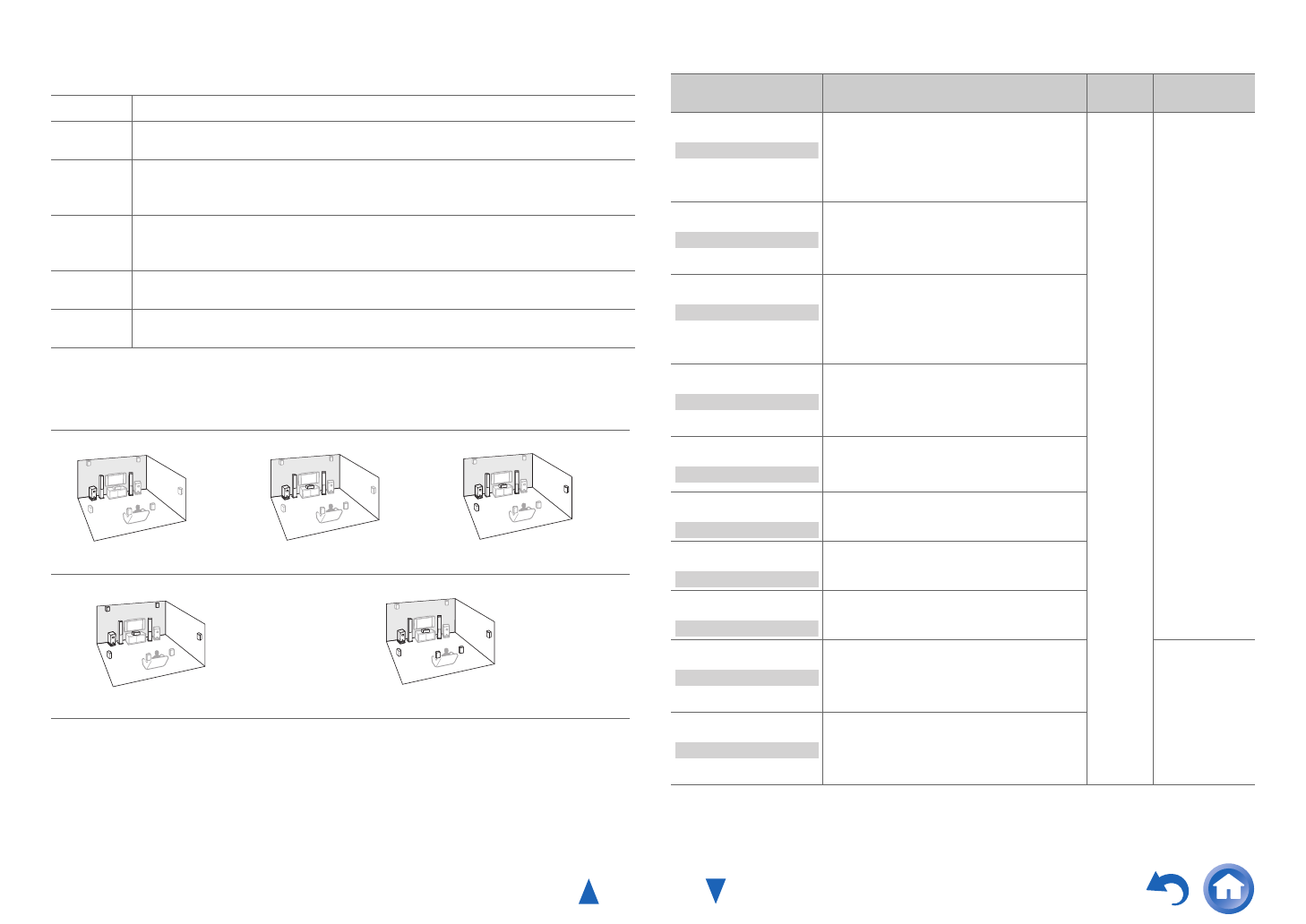user manual
Table Of Contents
- Safety Information and Introduction
- Connections
- Turning On & Basic Operations
- Playback
- Playback
- Controlling Contents of USB or Network Devices
- Understanding Icons on the Display
- Playing an Audio from Bluetooth-enabled Device
- Playing a USB Device
- Listening to TuneIn
- Registering Other Internet Radio
- Changing the Icon Layout on the Network Service Screen
- Playing Music Files on a Server (DLNA)
- Playing Music Files on a Shared Folder
- Remote Playback
- Listening to AM/FM Radio
- Playing Audio and Video from Separate Sources
- Using the Listening Modes
- Displaying Source Information
- Using the Sleep Timer
- Setting the Display Brightness
- Changing the Input Display
- Muting the AV Receiver
- Using the Whole House Mode
- Using the Home Menu
- Playback
- Advanced Operations
- Controlling Other Components
- Controlling Other Components
- Preprogrammed Remote Control Codes
- Looking up for Remote Control Codes
- Entering Remote Control Codes
- Remapping Colored Buttons
- Remote Control Codes for Onkyo Components Connected via RI
- Resetting the REMOTE MODE Buttons
- Resetting the Remote Controller
- Controlling Other Components
- Using the Onkyo Dock
- Controlling Your iPod/iPhone
- Controlling Other Components
- Appendix
- Internet Radio Guide
- Remote Control Codes

Playback
En-42
Input Source
The following audio formats are supported by the listening modes.
Speaker Layout
The illustration shows which speakers are activated in each channel. See
“Speaker Configuration” for the speaker setup (➔ page 59).
■ Onkyo-Original DSP Listening Modes
A
This is mono (monophonic) sound.
S
This is stereo (stereophonic) sound. Two independent audio signal channels
are reproduced through two speakers.
D
This is 5.1-channel surround sound. This surround system has five main
channels of sound and a sixth subwoofer channel (called the point-one
channel).
F
This is 7.1-channel surround sound. This is a further sound enhancement to
5.1-channel sound with two additional speakers that provide greater sound
envelopment and more accurate positioning of sounds.
G
This is DTS-ES surround sound. This surround system can produce a discrete
or a matrix-encoded sixth channel from existing DTS 5.1 encoded material.
H
This is Dolby Digital EX surround sound. This provides a center back surround
channel from 5.1-channel sources.
ZXC
BV
Listening Mode Description Input
Source
Speaker
Layout
Orchestra Suitable for classical or operatic music,
this mode emphasizes the surround
channels in order to widen the stereo
image, and simulates the natural
reverberation of a large hall.
A
S
D
F
G
H
CN
Unplugged Suitable for acoustic instruments, vocals
and jazz, this mode emphasizes the
front stereo image, giving the impression
of being right in front of the stage.
Studio-Mix Suitable for rock or pop music, listening
to music in this mode creates a lively
sound field with a powerful acoustic
image, like being at a club or rock
concert.
TV Logic This mode adds realistic acoustics to TV
shows produced in a TV studio,
surround effects to the entire sound, and
clarity to voices.
Game-RPG In this mode, the sound has a dramatic
feel with a similar atmosphere to
Orchestra mode.
Game-Action In this mode, sound localization is
distinct with emphasis on bass.
Game-Rock In this mode, sound pressure is
emphasized to heighten live feel.
Game-Sports Suitable for audio source with much
reverberation.
All Ch Stereo Ideal for background music, this mode
fills the entire listening area with stereo
sound from the front, surround, and
surround back speakers.
XCN
Full Mono In this mode, all speakers output the
same sound in mono, so the sound you
hear is the same regardless of where
you are within the listening room.
Or c es t r ah
Unp uggedl
Stu io– Mi xd
TV og i cL
Gam – R P Ge
Gam –Ac t i one
Gam –Ro c ke
Gam – S p or tse
Al l Ch Stereo
Fu l Monol










